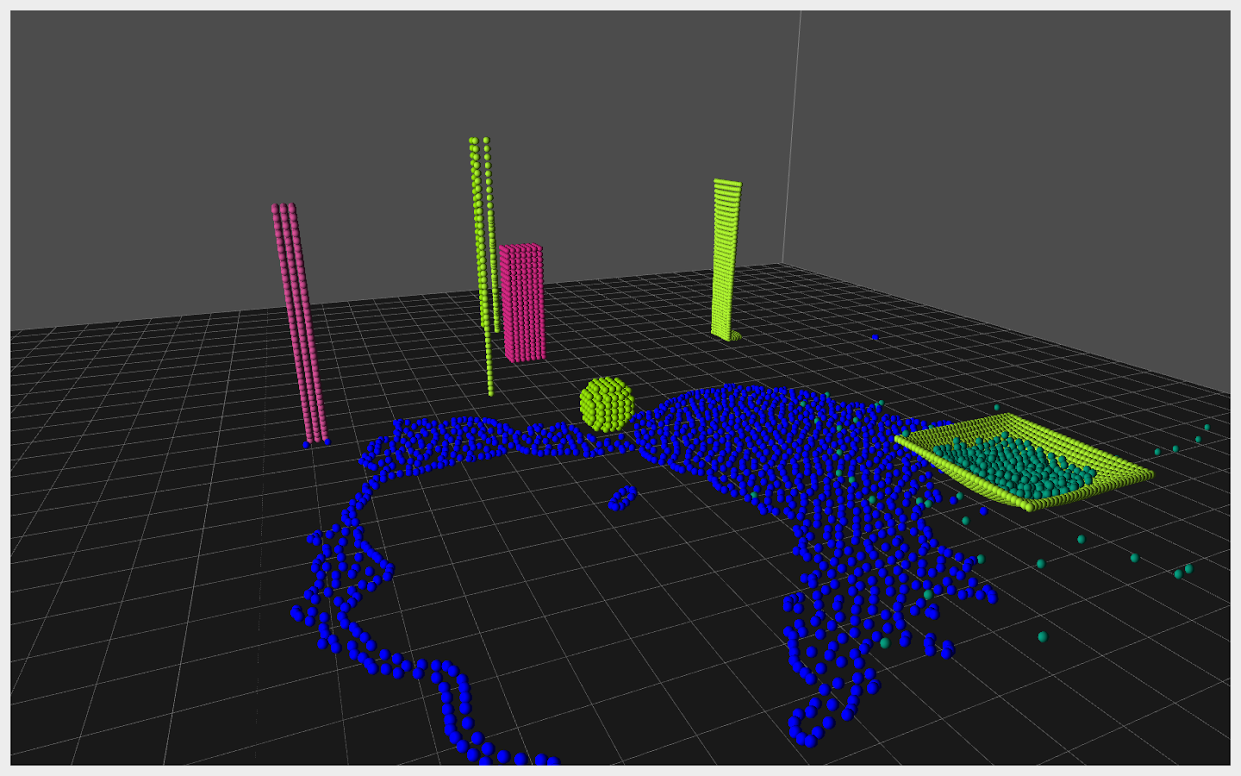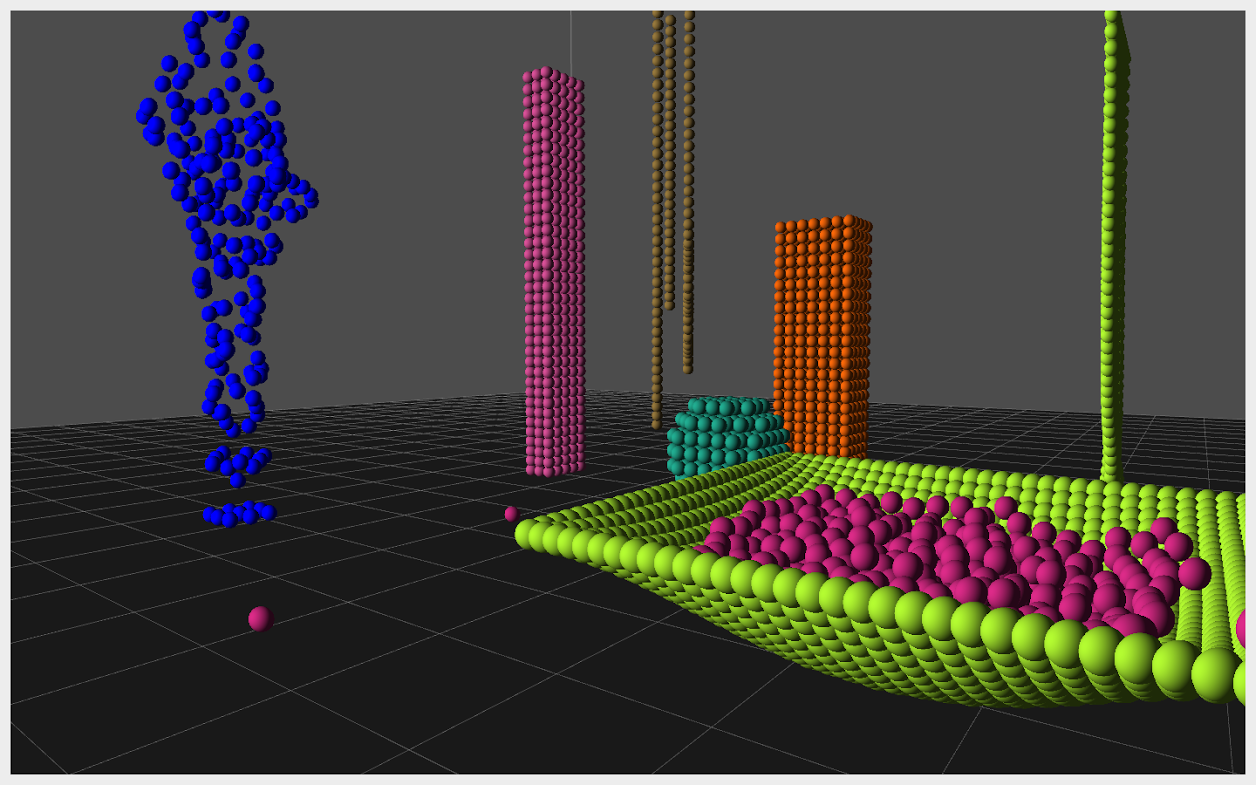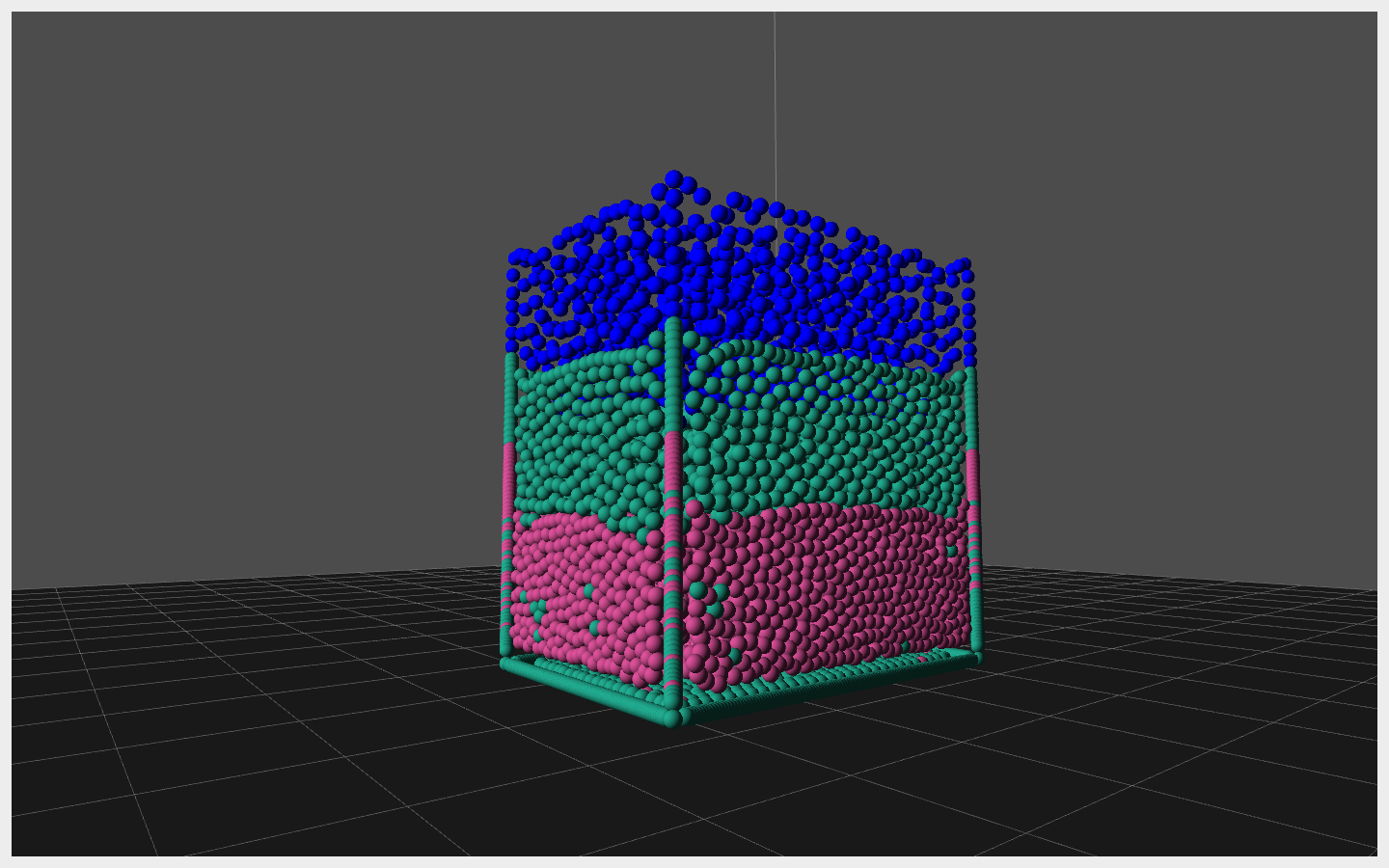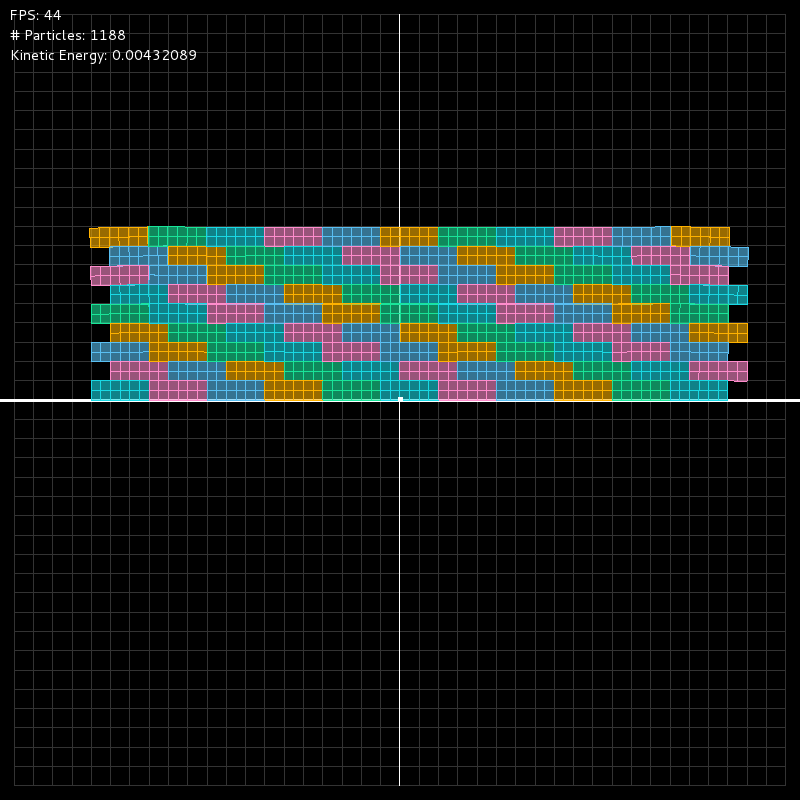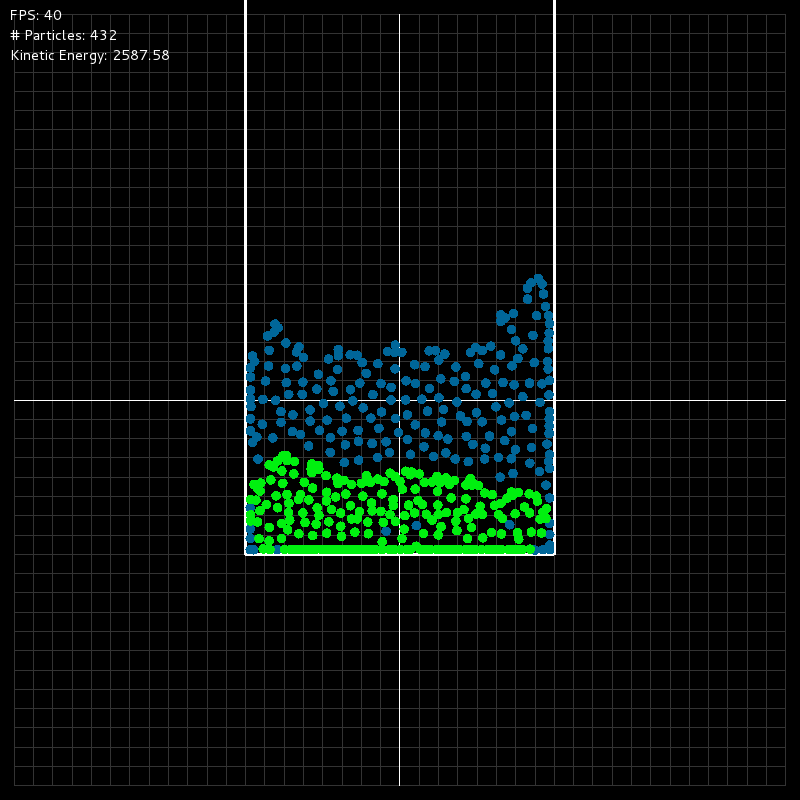An implementation of Macklin et. al's Unified Particle Physics for Real-Time Applications for both the CPU and GPU.
This physics simulation was implemented on both the CPU (leveraging the Qt framework) and GPU (using CUDA) as a final project for Brown University's graduate-level course CSCI2240: Interactive Computer Graphics by Evan Birenbaum '15, Logan Barnes '15, and Geoff Trousdale '15.
The simulation supports a variety of states of matter by representing the entire world as a large set of small, individual, and independent particles that are influenced by a set of constraints. The system supports the following physical phenomena with two-way interaction:
- Inter-particle collisions
- Rigid bodies with approximated stacking
- Friction
- Rope and cloth
- Fluids
- Gases
The following demo scenes are built in the CPU application, labeled with appropriate key commands to bring them up:
- 1 - A collapsing sand pile demonstrating frictional effect on angle of repose
- 2 - Stiff stacks of rigid bodies
- 3 - Stable stacking of rigid bodies in the formation of a wall
- 4 - Chained rigid bodies acting as a pendulum
- 5 - A fluid caught and held by a rope
- 6 - Two fluids settling, demonstrating the Rayleigh-Taylor instability
- 7 - Solids sinking or floating based on density
- 8 - Gas particles interacting with a swinging rope
- 9 - A rigid body being stopped by friction
- 0 - Fluids trapped like a water balloon
- D - Gas particles emitted into a closed space
- S - Gas particles emitted into an open space
- W - I came in like a wrecking ball!
- N - Newton's cradle
- . - Resolution of interlocked rigid bodies
- V - A volcano erupting and settling
The following commands may also be useful:
- T - Toggle real-time or time-step mode
- Space - move forward by a time step during time-step mode
- R - reset the simulation
- C - toggle rendering of individual particles
Note: This version of the program no longer uses the CUDA 7 cuSolver library allowing it to be run on CUDA 5 capable machines.
The following demo scenes are built in the GPU application, labeled with appropriate key commands to bring them up:
- 1 - A single rope demonstrating basic distance constraints
- 2 - A cloth created with a grid of distance constraints
- 3 - Two fluids settling, demonstrating the Rayleigh-Taylor instability
- 4 - A single stack of solid particles
- 5 - Multiple stacks of solid particles
- 6 - A grid of solid particles falling into a cloth net
- 7 - A giant ball of fluid being fluidy, and demonstrating surface tension
- 8 - A combo scene of solid particles, cloths, ropes, and an immovable sphere
- 9 - Hair...just hair
- 0 - Empty scene
Moving around in the scene:
- W - Move forward
- A - Move left
- S - Move backward
- D - Move right
- Mouse - Look around
- Left Click - Shoot particle into scene
- Space - Add fluid to scene at origin (not guaranteed to maintain stability)
